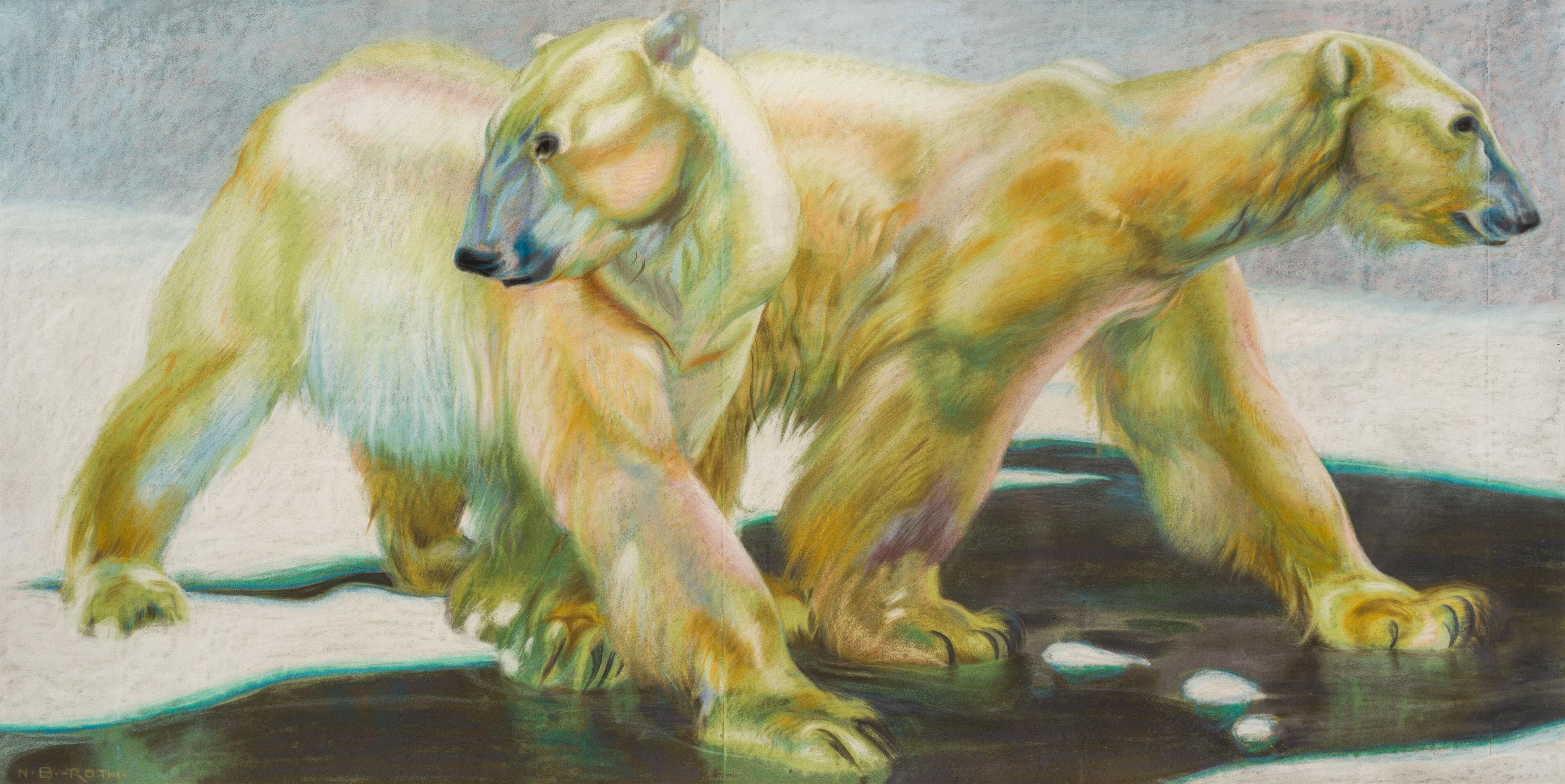0024
Norbertine Bresslern-Roth*
(Graz 1891 - 1978 Graz)
„Zwei Eisbären“
c. 1922
pastel on paper; framed
75 x 149 cm
signed on the lower left: N. B.-Roth.
Provenance
private collection, Styria
Exhibition
2003 Graz, St. Veiter Schlössl
Literature
Michael Stoff (ed.), Bresslern-Roth. Eine Hommage im St. Veiter Schloessl zu Graz, Graz 2003, ill. p. 150;
Christa Steinle (ed.), Norbertine Bresslern-Roth. Tiermalerin, exhibition catalogue, Neue Galerie Graz Universalmuseum Joanneum, 26.10.2016-17.04.2017, Graz 2016, ill. p. 119
Estimate: € 50.000 - 100.000
Hammer price: € 45.000
Auction is closed.
Polar bears currently face a tragic fate. They are suffering enormously from the disappearance of ice in the polar regions due to climate change.
Norbertine Bresslern-Roth (1891-1978), who explicitly called herself an “animal painter”, was always empathetic regarding animals. The content of her paintings is essentially limited to her own interpretation of the animal world and can thus only be partially described as “documentary” in nature. Her style, which must be understood in the context of the traditions of the late 19th century – Symbolism, Classicism and Art Nouveau – rarely appears modern and, moreover, remained largely unchanged throughout the painter’s life. The artist’s seemingly boundless love of animals is revealed in most of her animal paintings. For her, animals are very close to human beings. Their way of moving, their facial expressions, their family structures – all these create an additional emotional closeness to these living beings.
These polar bears, too, are hard to beat in their elegance and the delicacy of the painting is typical of the artist. In the white fur of the animals, which is in fact perfectly white, and in the icy polar environment, the painter finds a myriad colour tones that she can use to present the animals in an even more attractive way. The colouring makes their fur seem almost decorative. The animals’ movements on the ice and their natural caution in doing so show the polar bears in an incredibly vivid and authentic way. Bresslern-Roth knew such animals from her constant visits to zoos in various European cities.
The artist never had any problems with the decorative or ornamental. This is partly due to her artistic background. As much as the content – animals and their fate, happiness or distress – was close to her heart, she also had strong aspirations regarding form. She always remained figurative, seeking to create clear forms with strong colours and to make full use of lines to depict movement. Thus, in terms of form, it was basically a matter of balancing the emphasis within the composition of the picture.
Norbertine Bresslern-Roth, who – as a woman – was not permitted to study at the Academy of Fine Arts in Vienna, had private lessons with Ferdinand Schmutzer and used his studio at the Academy. During the Nazi era, the artist accepted commissions, held regular exhibitions and enjoyed success. Outwardly, she conformed as much as possible, since she had to protect her husband and “manager” Georg Ritter von Bresslern und Sternau, whose mother was Jewish.
(Günther Holler-Schuster)



